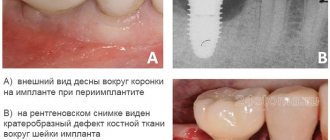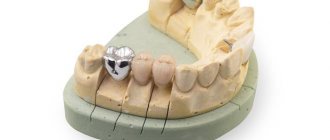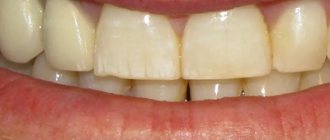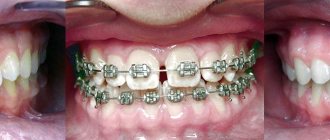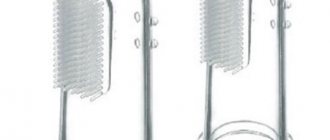Filling is one of the most common methods of caries treatment. However, like any method, filling has its drawbacks. Over time, for one reason or another, the material ceases to perform its functions 100 percent effectively. And the old filling needs to be replaced.
The average period for which one filling made of modern material is designed is calculated in years (5-10 years). In some cases, they may last even longer. But often the time comes when the fate of the old filling has to be decided immediately. And in order not to miss the moment, dentists recommend regularly – at least 2 times annually – visiting the dentist for a preventive examination.
In what cases is it necessary to install a filling?
The installation of restorative material is carried out not only in the treatment of carious lesions. The procedure is also performed when:
- presence of chips and cracks;
- elimination of consequences after mechanical damage;
- intense loss of hard tissues, leading to almost complete wear of the upper part of the teeth (for example, due to involuntary grinding of the jaws).
It is worth noting that any dental clinic performs filling only in cases where the destruction of the coronal part is insignificant. If the surface of the tooth is damaged by more than a third, it is replaced with an artificial substitute - a prosthesis.
The use of modern materials helps restore the beauty of the smile and chewing function, and also prevents further destruction of the mineralized coating.
Other indications for replacing an old filling
Subsidence of the filling . Over time, the material from which the filling is made shrinks (vertical and horizontal).
When the filling subsides vertically, the height of the bite changes, which can cause dysfunction of the temporomandibular joint. In addition, the shrinkage of the filling changes the height of the contact point between the antagonist teeth (teeth of the upper and lower jaw). And since the teeth experience a lot of stress during the process of chewing food, constant pressure can cause the defective filling to collapse, and along with it, part of the tooth.
When the filling shrinks horizontally, the contact point (point of contact) between adjacent teeth disappears. While eating, food gets stuck between the teeth and constantly injures the interdental (dental) papilla. The gums become inflamed, gingivitis, periodontitis and secondary caries develop.
Overhanging edges of the filling. This defect occurs if the filling material flows onto the gum (rests on it). The overhanging edge of the filling leads to permanent injury to the gums and causes inflammation. Often such a filling causes local periodontitis (periodontitis in the area of one tooth) and secondary caries, since it is impossible to remove food debris from the resulting pocket.
The contact point is formed correctly if the dental floss (floss) forcefully penetrates the gap between the teeth, moves freely along the side surface of the tooth (does not cling to irregularities) and is pulled out with force.
Another reason for replacing an old filling is the incorrect anatomy of the chewing surface of the tooth. Most often this is a consequence of poor quality treatment. The surface of an old filling may be almost smooth and lack pronounced bumps and fissures.
The correct shape of the tooth surface provides not only an aesthetic appearance, but also the performance of chewing functions. The lack of a natural pattern on the chewing surface of the teeth does not allow for effective grinding of food and leads to gastrointestinal diseases.
When biting and grinding food, the teeth experience a heavy chewing load. In order for the antagonist teeth to connect into the correct bite and not experience strong friction against each other, they must touch at points of a small area.
The correct connection to the bite is determined, among other things, by the shape of the surface of the teeth. To create such a surface, a dentist must have a good knowledge of the anatomy of teeth and possess the skill of a sculptor.
You can also replace an old filling with a new one for aesthetic reasons. Over time, teeth and fillings will change color; this discrepancy may also be a reason to replace the filling.
What types of fillings are there?
Depending on the period of use, temporary and permanent fillings are distinguished. The first ones are placed during treatment. For example, they cover a tooth for a while in order to understand whether the nerve is affected by caries or not. A temporary filling is also used to secure medications placed in a diseased tooth, or to secure arsenic after depulpation. After two weeks, temporary materials are replaced with permanent ones. The latter can last for years.
In modern dentistry, the following types of fillings are distinguished:
- Cement fillings are a budget option. They are difficult to grind, look unnatural and can cause destruction of the teeth they interact with.
- Metal (almagamic). They are made from an alloy of silver and copper, are characterized by increased strength, but also stand out against the background of the rest of the jaw. Often, fillings of this type are installed on teeth located further than the incisors.
- Composite fillings. They have a paste-like consistency and are applied in layers, so working with them does not cause much difficulty. Special ultraviolet light is used to fix composite materials. The variety of the palette allows you to choose a shade that will not differ from the native enamel, which is why composites are widely used for the restoration of anterior teeth.
- Ceramic fillings. In appearance and composition, they are as close as possible to the natural coating of teeth. Their production takes some time, so the fixation of the material is carried out in several stages. Ceramics are resistant to temperature changes. Its main advantage is also aesthetics.
Service life of temporary filling.
Based on the diagnosis and the chosen treatment, the intermediate filling is made from different materials and lasts from several hours to several weeks. The deadline is set only by the dentist. Here are some examples:
- If medicine is placed in the tooth cavity for disinfection or therapeutic purposes - 7-10 days;
- Arsenic - now almost never used in the treatment of pulpitis, but nevertheless - up to 3 days;
- Anti-inflammatory drugs for the treatment of particularly advanced cases - a month. In exceptional cases - up to six months;
- Antibiotics - 3-4 days.
It is important to come to the appointment for examination and removal of the temporary solution strictly on the appointed day. If it doesn’t work out, it’s better a day earlier than later. The doctor will examine you and suggest further treatment.
What types of fillings are better?
Many dentists recommend installing fillings made of light-curing composite. They are characterized by increased strength and durability, and look natural. Composite fillings are suitable for filling cavities in distant teeth and restoring carious cavities, as well as for treating erosions of hard tissues. Their service life is 5 years.
Glass ionomer cement, which is a hybrid of acrylic and silicate components, is also considered a good choice for filling. Glass ionomer combines well with natural coatings and other established types of fillings; it is suitable for treating destructive processes of the tooth, filling the anatomical space under the roots, and preparing the cavity for further orthopedic manipulations.
Light-curing composite fillings
The components of a light-curing filling react to the glow of a special lamp. The polymerization lamp emits blue light, affecting the components of the filling in a special way; the wavelength is 450 nm.
Advantages of light-curing composite fillings:
- High aesthetics
- Large color palette;
- High strength;
- Low shrinkage;
- Long service life;
- The technology allows the dentist to make a more accurate anatomical shape.
Disadvantages of light-cured composite fillings:
— Higher cost compared to other types of fillings.
In “Royal Smile” dentistry, high-quality materials and reliable specialized equipment are used for fillings. The procedure for installing a filling is carried out by experienced dentists without pain at low prices.
How is the filling installed?
The fixing of the restoration material always follows the same pattern:
- First, the doctor injects into the tissues located around the damaged area.
- When the medicine begins to act, the specialist cleans the cavity from the remains of dead tissue, darkened mineralized parts and dentin, and gives it the desired shape and depth.
- The doctor then examines the pulp. If the connective tissue is not damaged, the prepared area is treated with an antiseptic. If the pulp is in a state of inflammation, then the dentist removes it from the tooth cavity and then fills the canals.
- After the above manipulations, the cavity is dried. Then special antimicrobial and insulating gaskets are placed in it.
- At the final stage, filling is carried out. At the end of the operation, the installed material is ground for comfortable closure of the jaws and polished.
Check yourself: when to see a doctor
If a tooth hurts 2-3 days after the filling is placed, and the pain noticeably intensifies when pressed at night, this may indicate a relapse of caries and damage to the dental nerve. If black spots are visible under the filling several months after treatment, the filling interferes with the closure of the jaws or there is prolonged pain when pressing on the tooth. Do not ignore these symptoms and do not be afraid - this is a reason to contact your attending physician - all work must be carried out within the framework of the guarantee of the medical institution. Timely treatment is the key to the health of your teeth!
After teeth filling
In some cases, after applying a filling, the sensitivity of the sealed tooth to external factors may increase: it may “ache” unpleasantly with any temperature change or when air enters. This most often happens when using composite materials. If the tooth remains sensitive two weeks after treatment, you should immediately consult a doctor.
A common cause of pain that occurs immediately after the anesthetic wears off can also be an excessive filling height. In this case, it should be reduced by the dentist.
The application of a filling is always accompanied by final grinding, during which the edges may remain sharp. Due to the action of the injection, this is often not felt immediately. If you notice protruding edges after the anesthetic has worn off, you should contact a dental clinic as soon as possible and make an appointment to straighten the tooth surface.
How to properly perform hygiene procedures
After treatment, brush the filled tooth carefully, applying minimal pressure to it. Do not use rinses containing abrasive substances and alcohol, which can increase the plasticity of the material - this will lead to a change in the shape of the filling. Also, do not use overly hard brushes - they can leave microcracks in the material, which will not have the best effect on the durability of the filling.
In general, you should take care of teeth with fillings in a completely standard way:
- daily brushing of teeth twice a day - in the morning after breakfast and in the evening after all meals, after - rinsing the mouth with water and rinse,
- To clean the area of filled teeth after eating, it is better to replace dental floss with an irrigator. If you floss (thread) carelessly, you can touch the installed filling, especially if there are thin edges of the tooth, which will lead to its chipping or loss.
Rules for caring for fillings
Despite the fact that many fillings can theoretically last for years, it is recommended to change the materials every 10-12 years. It is recommended to visit a doctor once every six months for hygiene measures. You should also make an appointment with a doctor if:
- short-term pain in the treated area;
- detection of cracks;
- presence of a chip in the filling material.
The dentist can easily replace a bad filling with a new one.
If there is a large amount of restoration material in the cavity, you can ask the specialist to prescribe a gel with a high fluoride content. Its regular application will help strengthen the hard surface and prevent caries from forming again. Filled teeth may also be coated with fluoride varnish during the examination.
At home, it is recommended to use mouth rinses. With their help, you can significantly reduce the number of microbes that cause caries.
Summarizing the above, I would like to note that filling is a serious procedure. To prevent dental treatment under anesthesia from ending with repeated fillings and a double waste of time and money, you should seek help only from reliable, experienced specialists.
Therapy - prices for dental treatment
| NAME OF SERVICE | COST, RUB. |
| Application anesthesia | RUB 100.00 |
| Infiltration anesthesia | RUB 600.00 |
| Conduction anesthesia | RUB 600.00 |
| Rg | RUB 300.00 |
| Trephination of the tooth crown | RUB 300.00 |
| Applying an insulating pad | RUB 500.00 |
| Applying a therapeutic pad | RUB 300.00 |
| Light filling 1st surface | RUR 2,200.00 |
| Light seal 2nd surface | RUR 2,900.00 |
| Partial pinless tooth restoration with light-curing material | RUR 3,700.00 |
| Chemical filling 1st surface | RUB 1,500.00 |
| Chemical seal 2nd surface | RUR 2,200.00 |
| Partial pinless tooth restoration with chemically cured material | RUB 3,000.00 |
| Polishing the filling | RUB 100.00 |
| Polishing a filling placed in another clinic | RUB 500.00 |
| Restoration of a tooth stump for a crown using a chemically cured material | RUB 3,800.00 |
| Restoration of a tooth stump for a crown using light-curing material | RUR 4,800.00 |
| Using an anchor or parapulp pin | RUB 1,000.00 |
| Using fiberglass pin | RUB 1,500.00 |
| Veneer made of light material | RUR 5,000.00 |
| Splinting in the area of the 1st tooth | RUB 1,700.00 |
| Opening of the tooth cavity and medicinal treatment | RUB 500.00 |
| Mechanical and medicinal treatment of the 1st channel | RUB 1,000.00 |
| Repeated medical treatment of the 1st canal for complicated periodontitis | RUB 400.00 |
| Mechanical and medicinal treatment of the 1st difficult canal | RUB 1,700.00 |
| Application of arsenic paste | RUB 300.00 |
| Filling the 1st channel with paste | RUB 1,000.00 |
| Filling the 1st canal with gutta-percha | RUB 1,000.00 |
| Temporary filling of the 1st channel | RUB 500.00 |
| Removing a foreign body from the canal | RUB 2,000.00 |
| Unsealing, mechanical and medicinal treatment of the 1st channel | RUB 1,700.00 |
| Unsealing, mechanical and medicinal treatment of the 1st difficult canal | RUR 2,300.00 |
| Unsealing, mechanical and medicinal treatment of the temporarily sealed 1st channel | RUB 300.00 |
| Removing the anchor pin | 1000.00 rub. |
| Temporary filling | RUB 300.00 |
See the price list for all dental prices
If, when treating caries, the doctor made a mistake or carried out incorrect treatment of the pulp, then caries will definitely begin to grow and progress. This can lead to periodontitis, in which it is necessary to thoroughly and thoroughly clean and seal the dental canals. If this is not done, the infection will go deeper and periodontitis will transform into periostitis. Dentists call “periostitis” inflammation of the periosteum, or the so-called “flux”. If it is not treated in a timely manner, the inflammatory process will affect the entire body and the person may lose a tooth. To reduce the risk of medical errors during treatment and filling of dental canals, it is advisable to carry out such endodontic procedures under a microscope.
When fighting caries, great attention should be paid to preventive measures. This means that the patient must carry out high-quality oral hygiene procedures and undergo regular medical examinations.
It is necessary to destroy caries in the first stages of its manifestation. To do this, it is necessary to use differentiated diagnostic technology. Then the doctor will not have to use a drill. He can do just fine with minimally invasive treatments.
How does the replacement take place?
Many patients are worried: is it painful to change a filling? The procedure is performed under local anesthesia and is therefore absolutely painless.
In general terms, re-sealing occurs as follows:
- anesthesia is administered
- the desired tooth is isolated from the oral cavity with a rubber dam: so that moisture and microorganisms do not enter the treated cavity,
- old filling material and tissues affected by caries (if any) are removed
- the cavity is treated with a special etching solution and dried,
- an insulating or medicinal pad is applied,
- a new filling is applied.
Restoration takes place with mandatory consideration of the anatomical features of the chewing surface.
What to do if the filling falls out?
It may happen that the filling falls out earlier than necessary. What to do? It would be right to immediately, in the near future, go to the clinic and see the treating dentist. The doctor may place another similar filling or a permanent one, depending on the course of the disease. Be that as it may, you cannot walk around with an open tooth, eat food or do nothing. Complications may arise and the inflammatory process will begin. While it is not possible to visit a doctor, rinse your mouth as often as possible, especially after eating.

